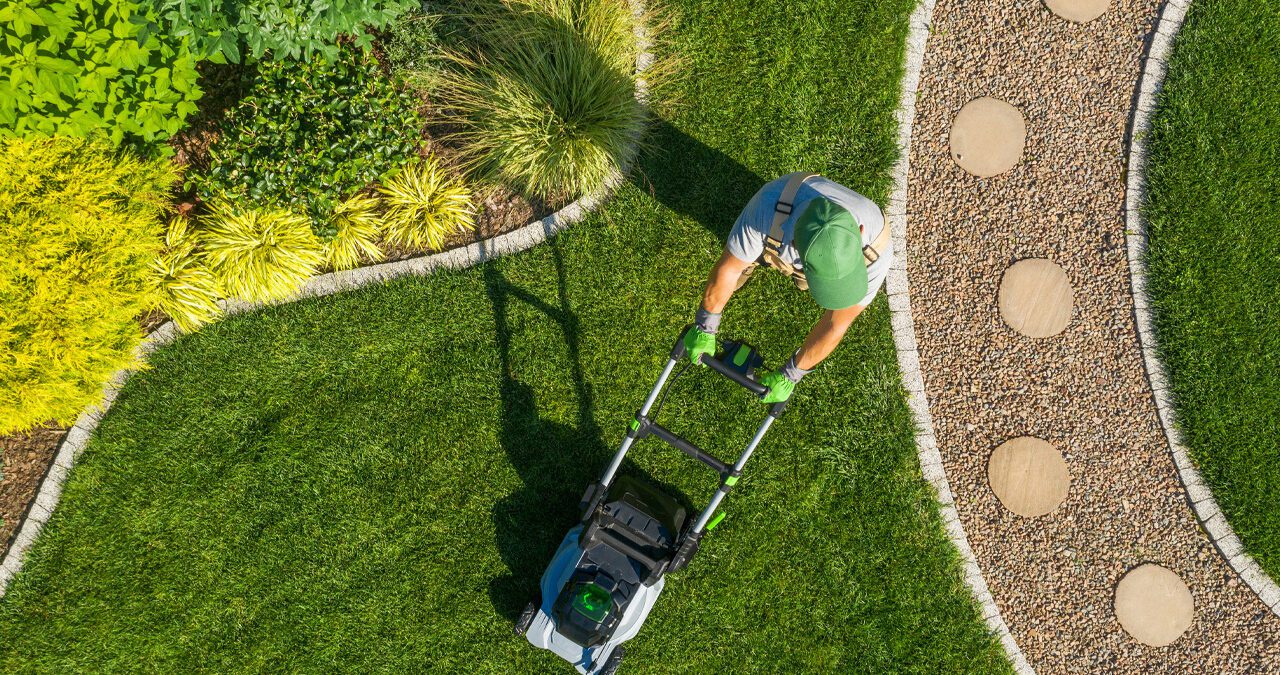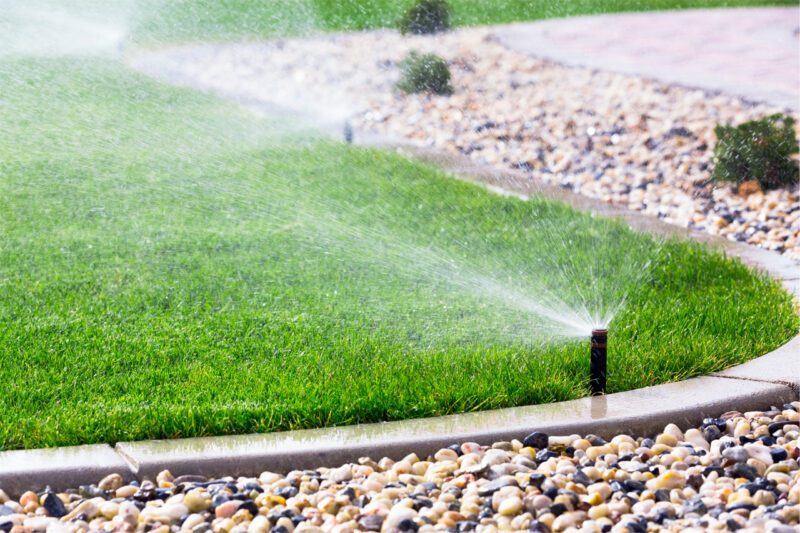
Kansas summers are especially brutal on your lawn. Sporadic rainfall and drought can kill your grass or damage its growth cycle for the entire season. Sedgwick County residents currently face a severe to moderate drought, and Wichita residents are under Stage 1 of the Drought Response Plan. With that in mind, Elite Landscape Solutions provides practical information on lawn care during a drought to help you maintain a healthy lawn while conserving water.
Understanding Drought’s Impact on Your Lawn
As the lack of water takes effect, grass will often turn brown, the blades of grass will begin to curl and you may leave footprints in the grass. Warm-season grasses are naturally drought and heat-tolerant. During periods of low water, warm season grass will go dormant, looking dead, but the root system stays alive. On the other hand, cool-season grasses don’t go totally dormant. Instead, the grass may be partially dormant throughout the season but the deeper roots may experience damage or even death.
Watering Wisely for Drought Survival

Everyone knows watering your lawn is important, but to be truly efficient throughout a drought consider frequency, timing, and source of water when maintaining your lawn.
Frequency
Avoid overwatering your lawn during a drought. For cool-season grasses (Kentucky bluegrass, fescue, ryegrass), we recommend watering once a week with one inch of water. Warm-season grasses (Bermuda, zoysia, buffalo) should be watered once every two to three weeks with one inch of water. Additionally, we suggest you water your grass deeply, which means watering the soil until the moisture has reached a depth of six to eight inches.
Timing
Choosing a time to water your lawn can be just as important as the amount of water you use. Water your lawn early in the morning to minimize evaporation. The best time frame is from 4 a.m. to 10 a.m. This will help soak the soil and ensure moisture reaches parts of the root system.
Efficiency
Don’t have a sprinkler system? Not a problem! Unlike sprinklers, soaker hoses and drip irrigation systems reduce water loss by delivering water directly to soil and roots. These options also use specific low pressure, and flow rates, watering deeply and saturating the soil.
Rainwater Harvesting
Sustainable and effective, rainwater collecting helps conserve city water resources. Using rainwater barrels or other collectors allows you to water more freely. In some cases, households can save up to 40% of their water consumption when using a harvester. Rain water barrels are affordable to install, starting at around $50.
Local Restrictions
Pay attention to any water-use restrictions from your city. The City of Wichita is under Stage 1 of the Drought Response Plan. This phase encourages residents to voluntarily reduce water usage; however, further stages require mandatory limits. Those limits include time specific watering and prohibiting outdoor water use on select days.
Mowing Strategies During Drought
Height
When it comes time to mow your lawn, consider the height of the grass. Set your mower to a height of three to four inches. Doing so ensures that the roots still have shade from the grass, reducing the rate of evaporation and keeping the soil cool.
Mowing Frequency
It’s easy to want to mow frequently. However, the lack of water slows grass growth and as a result requires less mowing. Let the grass grow longer, and when you mow cut only ⅓ of the grass blade at a time. Cutting the grass at this length reduces stress and helps save moisture
Sharpen Mower Blades
Dull lawn mower blades can tear, shred and damage grass leading to water loss, plant stress, and infection. Sharpening your mower blades gives your grass a clean cut. This promotes healthy healing, and moisture conservation by reducing the amount of grass exposed to evaporation.
Grasscycling
Grasscycling is the process of leaving grass clippings on the lawn after mowing. Doing so creates a natural mulch for your lawn that supports healthy growth and sustainability. Grass clippings are composed of around 80-85% water adding these to your lawn helps conserve soil moisture and protect your lush green lawn from evaporation. Grasscycling is an excellent way to care for your lawn by practicing sustainability.
Additional Drought-Tolerant Lawn Care Tips
Lawn maintenance is just as important during a drought as it is during periods of normal rainfall. Aerating the soil can help water reach grass root systems by creating small holes throughout your lawn. In general, fertilizing is helpful; however, over-fertilizing creates rapid growth eventually requiring more water. Lastly, weed control is essential during a drought because weeds compete with your grass for water resources. If you are unsure how to approach lawn care during a drought, Elite Landscape Solutions offers professional aeration, weed and pest control, and fertilization services.
Protect Your Wichita Lawn During Drought Conditions
Conserving water during a drought is crucial. Saving water and moisture comes down to the amount of water used as well as the ways in which you mow your lawn. As a lawn care company with years of experience, Elite Landscape Solutions is here to help with any questions or concerns throughout Kansas droughts. Schedule a free estimate today and let our experts guide you through the best lawn care practices for dry conditions!

